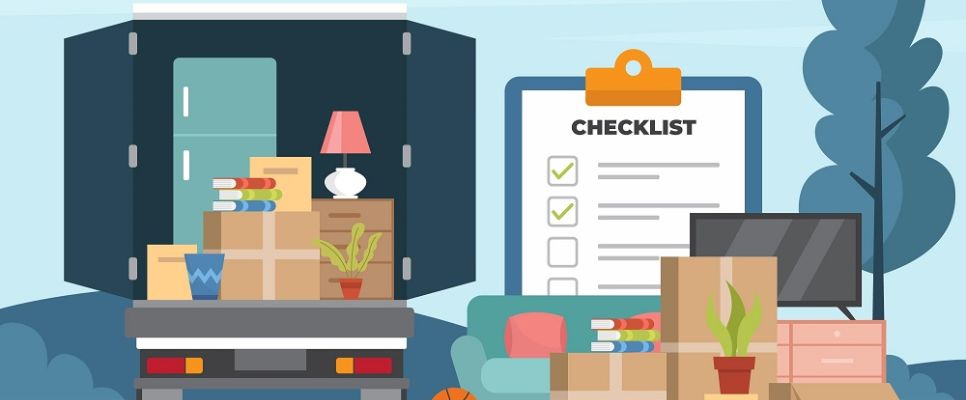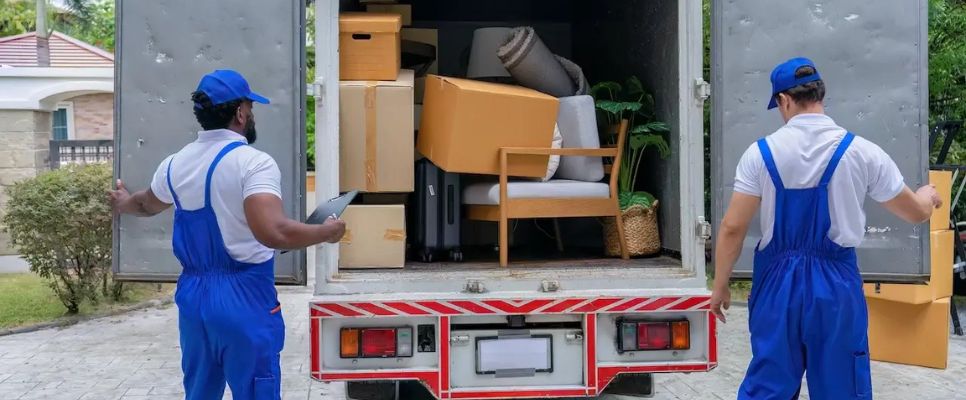Interstate moving is a unique and daunting task. It promises adventure but demands the hard work of uprooting your life and relocating it hundreds (if not thousands) of miles away. Interstate moving for work, family or a change of scenery takes time to plan and organise if you want it to be successful. Between hiring Removalists Adelaide and settling into a new community, there are plenty of things to remember when beginning the moving process. An in-depth interstate moving checklist with everything you need can make all the difference.
Here is the ultimate checklist to help you navigate the complexities of an interstate move. This comprehensive guide treats the entire moving process, from initial planning & prepping to installation in your new place. These are practical tips and actionable steps for all of you. Check and find the most critical steps and tactics that can assist in handling your move with comfort.
Interstate Moving Checklist For An Easy Relocation

When you follow a checklist, nothing gets ignored and you can execute the entire process smoothly.
1. Plan your move:
The success of an interstate move depends on careful planning. Simply getting prepped in advance for the main sections of your move will prevent you from scrambling at the last minute and making sure everything is taken care of by smooth means.
1.1. Create a Moving Timeline:
Action Steps:
- Select the date you will be moving and create a plan that lists out checkpoints, due dates etc.
- Budget for chores, including packing, hiring and finding movers.
Tip: An app that helps you move or having a digital calendar will help you keep this information organised, to adjust the timeline.
1.2. Set a Moving Budget:
Action Steps:
- Calculate costs for renting a truck, purchasing packing supplies and hiring professional movers.
- Determine how much money you will put towards each type of expense and allow for a miscellaneous fund to pay for surprising things.
Tip: The most affordable way to move is by getting quotes from several moving companies and comparing how much you can save.
1.3. Find Interstate Movers by Doing Some Research:
Action Steps:
- First and foremost, you need to find a few moving companies that you trust who have experience in interstate moves. Look for reviews and ensure the contractor possesses a license as well as insurance.
- Ask for quotes and measure pricing plans of other firms.
1.4. Create a Moving Inventory:

Action Steps:
- List all the items, especially top-dollar and fragile ones.
- Also, track your belongings via a moving app or spreadsheet.
Tip: Take pictures of expensive belongings as documentation for your insurance.
2. Prepare for the Move:
Now you have your plan in place and can begin to get ready for the move. Pick and pack, administrative tasks.
2.1. Sort and Declutter:
Action Steps:
- Go through your items by deciding which to keep, donate, sell or throw away.
With this, it gives you a reason to sell or donate old things (a garage sale) which means fewer items that need moving.
Tip: Cleaning out before you move not only reduces moving costs but makes packing more manageable.
2.2. Gather Packing Supplies:
Action Steps:
- Gather up boxes, shipping tape and bubble wrap or other necessary materials for packing.
- Think about using durable specialty boxes for dishes, electronics and clothes.
Tip: Most moving companies offer packing services that can save you time and ensure a professional package.
2.3. Pack Systematically:
Action Steps:
- Begin packing items that you won’t need over the next two weeks and mark boxes with a description of contents as well as which room they belong in.
- Pack the stuff you need immediately in clear boxes (clothes, basic kitchen stuff, toiletries).
Tip: Stick colour-coded labels on the boxes, or use a moving app.
2.4. Notify Change of Address:
Action Steps:
- Change of address notification to the post office, banks, credit card companies and any subscription services.
- Update your address with friends, and family and notify your employer.
Tip: Change your mailing address at the post office (any branch) to avoid missing any letters or important information.
2.5. Organize Utilities and Services:
Action Steps:
- Organize the shutting off of any utilities at your old place and set up to have them switched on in your new property e.g. electricity, water, gas (hot showers are great), internet etc.
- Let service providers know your installation dates & times are set.
Tip: Coordinate the timing of services for minimum downtime and avoid interruptions in service.
3. Moving Day:
The big day has arrived. We have packed up everything and just need to make a smooth moving day.
3.1. Finalize Packing:
Action Steps:
- Review again to make sure that everything has been packed and labelled accurately.
- Tie down anything that might be loose and break pieces of large furniture if needed.
Tip: Do not pack vital documents in the moving truck, and try to keep things of great value with you.
3.2. Meet the Movers:
3.2. Meet the Movers:
- Verify the time when a moving company is going to arrive and look over your contract.
- Simply stay where your goods are being loaded to help solve any problems that arise or to make sure they’re being treated properly.
Tip: Communicate with your mover to express the importance of delicate or valuable items so that they are deemed high priority.
3.3. Conduct a Final Walkthrough:
Action Steps:
- Do a final walk-through of your old home so you leave nothing behind and all doors and windows are locked.
- Snap photos of your space as an additional reference.
Tip: Leave any keys, garage openers or security codes with the new occupants being left in your home.
3.4. Travel to Your New Home:
Action Steps:
- Plan and map out your route and necessary travel plans for yourself and your family.
Also if it is an overnight move, work on the accommodations.
Tip: Travel Kit of Food, Water and Documents.
4. Settling into Your New Home:
When you get to your new home, it becomes about unloading and getting settled into the place, you will call home.
4.1. Unpack Strategically:
Action Steps:
- It is better to start by installing the kitchen and other necessary places, then follow suit with your luggage.
- Sort boxes according to room and work one room at a time so that you do not get flooded.
Tip: You may take breaks, and enlist help when possible so that this process becomes more smooth or manageable.
4.2. Inspect Your Belongings:

Action Steps:
- Note any damage or discrepancies and notify the moving company.
- Take Photos If Necessary to Document Damage For Insurance Claims.
Tip: For the most part, we recommend that you store all of these documents in one spot so they’re easy to access if needed.
4.3. Set Up Utilities and Services:
Action Steps:
- You make sure that all utilities and services are functioning and you help tenants resolve any issues with service providers.
- Complete any new service or installation that has not been set up yet before the move.
Tip: Local utility companies may be able to guide you on any issues or changes that need to be made.
4.4. Vehicle registration and documentation:
Action Steps:
- Process your updated vehicle registration, driver’s license and other documents with the correct address.
- Local laws may impose deadlines or conditions on vehicle registration, so make sure to look into these if you are required to perform this task.
Tip: Go to your local Department of Motor Vehicles for information on how to change your address.
4.5. Explore Your New Area:
Action Steps:
- It is also necessary for you to become familiar with the neighbourhood as well, like grocery stores nearby and medical services or schools.
- Connect with neighbours and local community groups or events.
Tip: Utilize some online resources or local apps to help you find services and attractions in your new area.
5. Post-Move Considerations:
After settling into your new home, there are some final tasks to help things go as seamlessly and smoothly as living in a different environment.
5.1. Organize a Housewarming:
Action Steps:
- Throw a housewarming party at your new home to celebrate and meet your neighbours.
- Take the chance to ask about local services and businesses.
Tip: Housewarming is also a great platform to know your new community and make relationships.
5.2. Review Moving Expenses:
Action Steps:
- Go over any incurred by the move expenses and organise receipts in case you qualify for a tax deduction or some sort of remuneration.
- This will allow you to compare how much the work costs with your budget so that you can identify any areas for improvement next time.
Tip: Keep a record of all expenses and receipts for tax or reimbursement purposes.
5.3. Update Your Information
Action Steps:
- Ensure banks, insurance companies and medical providers have your new address and phone numbers.
- Continually follow up with other organisations or services that may still have outdated information.
Tip: It is better to check and verify for the record updates regularly so that they do not fail over any important communication or service.
How Much Does Interstate Moving From Adelaide Cost?
The cost of interstate moving from Adelaide typically ranges from $1,500 to $4,500, depending on factors like distance, volume of belongings, and additional services like packing or storage. Prices can vary based on the specific destination and the time of year. It’s advisable to get multiple quotes to find the best deal.
Conclusion
The process of organising an interstate move in Australia is a strategic one and requires meticulous planning. This guide provides a detailed interstate moving checklist to ensure your move is done smartly. Doing everything from developing a moving timeline and budget to finding reliable movers you can trust or ensuring that your inventory list is thorough, each plays an important role in the success of your move.
Proper planning does not only help you manage the logistics of a move; it also relieves stress so that you can concentrate on learning about your new location. With the correct tools and resources like moving apps and professional interstate removalists, you should have no problem navigating an interstate move.


 4.3
4.3
 207+ Reviews
207+ Reviews



